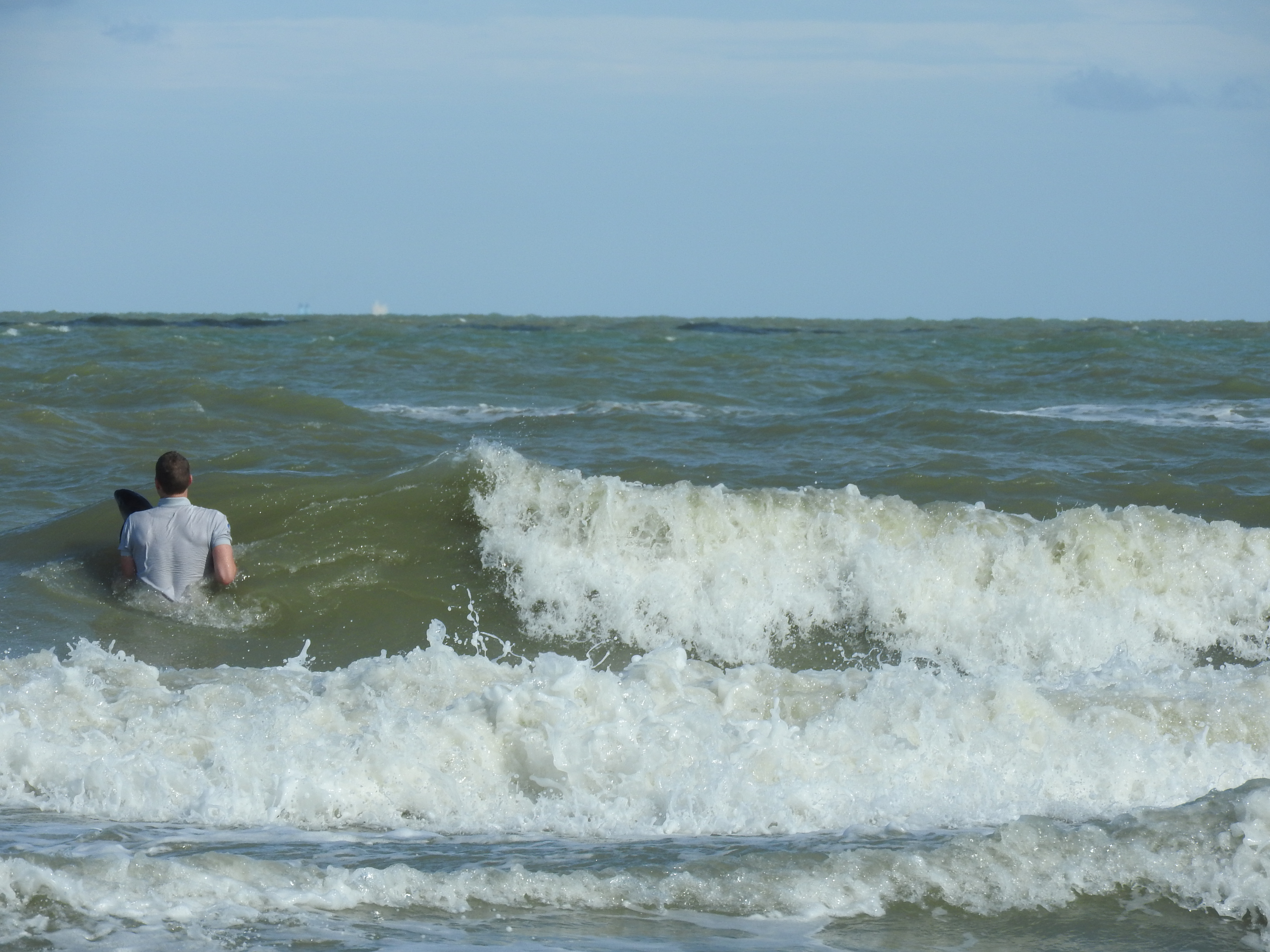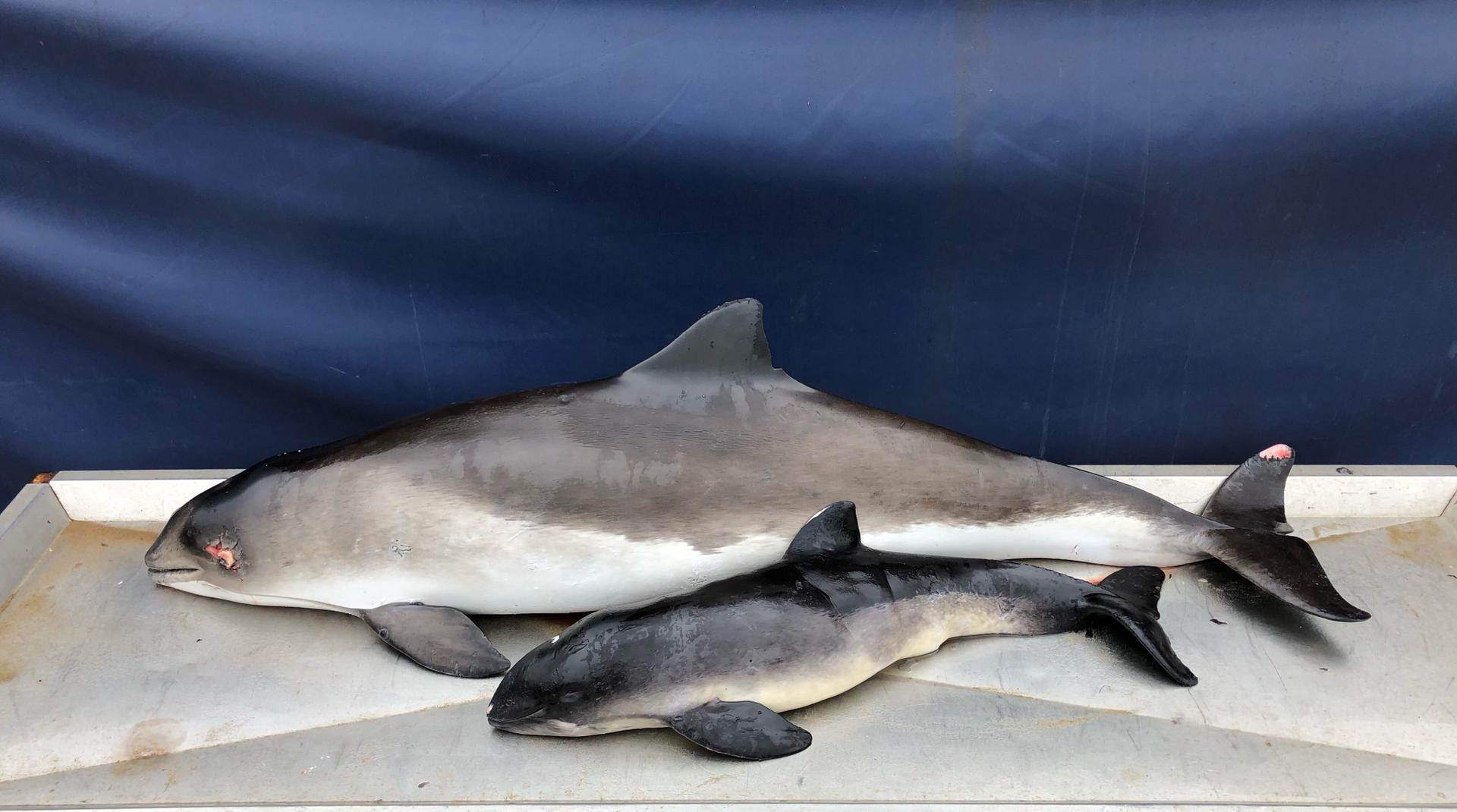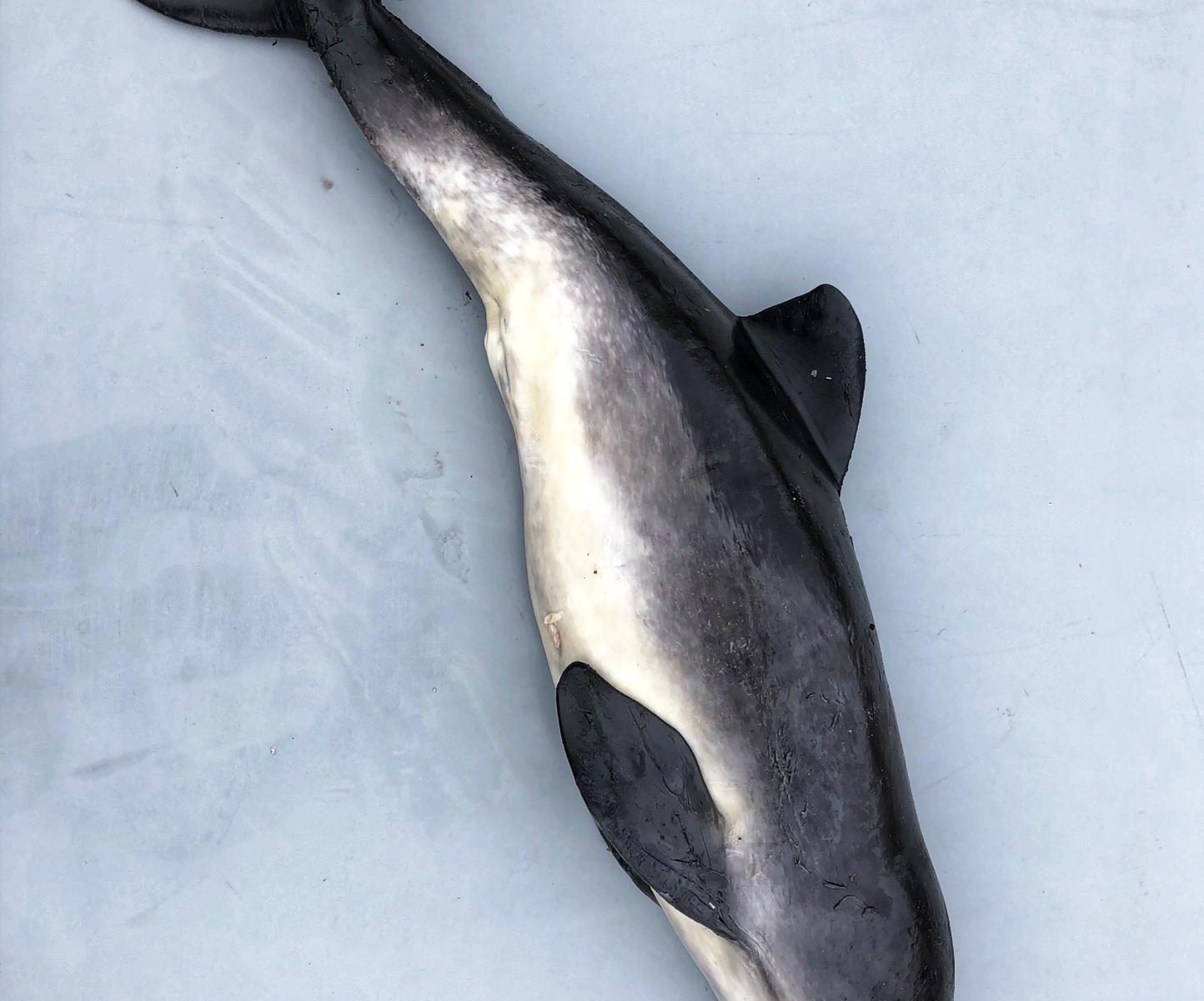In the morning of Sunday June 7th, 2020, the police of Middelkerke was contacted about the stranding of a live young porpoise (Phocoena phocoena). Experts from RBINS also went to the spot and found out that it was a recently born individual, a female with a length of 82 cm. Not only the limited length indicates a very young animal, also the fetal folds on the flanks and the hairs on the snout are characteristics that are only found in ‘neonates’. Fetal folds are due to the fact that cetaceans are bent dorso-laterally in the womb, and the hairs on the snout are a reminder that they are mammals. Both characteristics disappear soon after birth.

Porpoises of such a young age are fully dependent on their mother, it is impossible to keep them alive in a shelter without that mother. After consultation with the specialized veterinarians of Sea Life Blankenberge and the Bouddewijn Seapark of Bruges, it was therefore decided to put the animal back into the sea. A policeman and an RBINS expert needed several attempts to get the porpoise past the surf without it quickly returning to the beach.

Even though a return to the sea was the only option, those involved knew that the survival of the animal was by no means guaranteed. After all, the young porpoise was already very weakened, no mother could be identified in the area with certainty, and the strong surf also made a possible reunion of mother and child difficult. The fear came true: on Monday 8 June 2020, the young porpoise was found dead on the beach.



